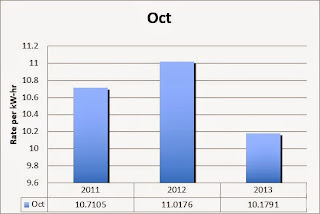DOE eyes Malampaya fund for solar panels in schools
Source: The Philippine Star.
http://www.philstar.com/business/2013/10/01/1239960/doe-eyes-malampaya-fund-solar-panels-schools
MANILA, Philippines - The Department of Energy (DOE) is proposing to tap the multi-billion peso Malampaya funds for solar panels to be distributed to about 10,000 schools all over the country.
The initial plan is to spend P150 million for a total of 1,000 megawatts in solar capacity to be distributed to roughly 10,000 schools at 100 kilowatts per school.
The target is to distribute the solar panels to the targeted schools over a period of one-a-half years, said Mario Marasigan, the director of the DOE’s Renewable Energy Management Bureau.
“Within the year, hopefully, we can start,” said Marasigan.
He said the DOE would be looking at areas where the cost of electricity is between P10 to P11 per kilowatt-hour.
The department would then tap a third-party proponent for the solar project that could bring down the rate by P2.
“We’re now doing school-to-school inventory of the schools to determine what the schools need,” he said.
Under the plan, the energy department would finance the acquisition of solar panels, which would then be repaid by the schools.
“The target is to tap the Malampaya funds but this is still subject to approval,” he said in a briefing yesterday.
Once approved, the Department of Budget and Management (DBM) would have to release the funds similar to the government’s Modular Generator Sets program, which also tapped P4 billion from the Malampaya funds.
Energy Secretary Carlos Jericho Petilla earlier assured that for the remaining term of the Aquino administration, all projects funded by the Malampaya royalties would be used to finance energy-related ventures.
His assurance came amid allegations that proceeds of the Malampaya deep water gas-to-power project went to bogus non-government organizations (NGOs) put up by businesswoman Janet Lim Napoles.
So far, the government’s share from the Malampaya project has totaled P165-P167 billion since the project commenced in 2001.
The Arroyo administration has utilized P20 billion out of this amount while the Aquino administration has so far used P15 billion.
There is still a remaining amount of P130 billion.
A joint undertaking between the Philippine government and the private sector, the Malampaya project is spearheaded and developed and operated by Shell Philippines Exploration, B.V. (Spex) on behalf of joint venture partners Chevron Malampaya LLC and the Philippine National Oil Co.-Exploration Corp.
The project is covered by Service Contract 38 and involves the production of natural gas to fuel three gas-fired power stations with a combined capacity of 2,700 megawatts.
Natural gas is the fuel for sustainable growth and development, helping to meet the world’s growing energy needs as the cleanest-burning fossil fuel with a globally abundant and diverse supply.
The Philippine Star. Retrieved from http://www.philstar.com/business/2013/10/01/1239960/doe-eyes-malampaya-fund-solar-panels-schools
***
EastGreenfields Enterprises is ready to assist in PV energy system study and design.
Please inquire: inquiry@eastgreenfields.com


